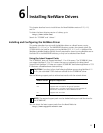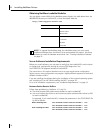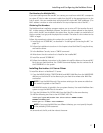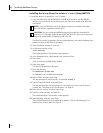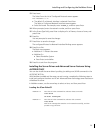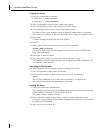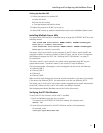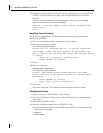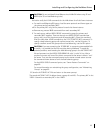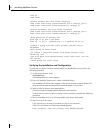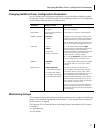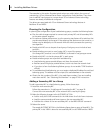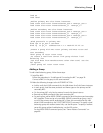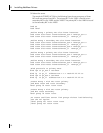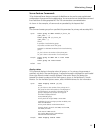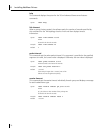
Installing and Configuring the NetWare Driver
63
b Add or verify the LOAD commands for the LAN drivers for all slot-frame instances.
c For each Load Balancing/RSL group, load the same protocols and frame types on
the primary and all secondary NICs.
d On the primary NIC only, bind a protocol to each slot-frame instance.
e Remove any protocol BIND commands from each secondary NIC.
f For each group, add an LBRSL GROUP command to group the primary and
secondary NICs together. There can be only one LBRSL GROUP command per
group, and it must list the primary and all secondary NICs. Place this command
after the LAN driver LOAD commands or the SYS:ETC\INITSYS.NCF command. To
specify a load balancing group with resilient server links, use the LB option. To
specify a resilient server link group without load balancing, use the RSL option.
For the LBRSL GROUP command syntax, see “Server Feature Commands” on
page 69.
For more information on maintaining the group configuration, see “Maintaining
Groups” on page 65.
5 Save the AUTOEXEC.NCF file and return to the server prompt.
The sample
AUTOEXEC.NCF file below shows a group of two NICs. The primary NIC in slot
10001 is bound to a secondary NIC in slot 10002.
CAUTION: Do not set Novell’s Load Balance Local LAN=ON when using SE and
LIBRSL (the 3Com Load Balancing suite).
CAUTION: If you are connecting the 3C990B NIC to a spanning tree-enabled hub
or switch, it is possible that the link may drop during load/reset. To avoid this
potential problem, avoid creating the load balancing group in the AUTOEXEC.NCF
file and comment out the LBRSL GROUP/BIND LB <slot 1><slot 2> line. Wait a
couple of minutes until one of the clients connected to the server is able to “see”
the server. Then use the command prompt on the server console screen to enter
the command shown above to form the load balancing group.



